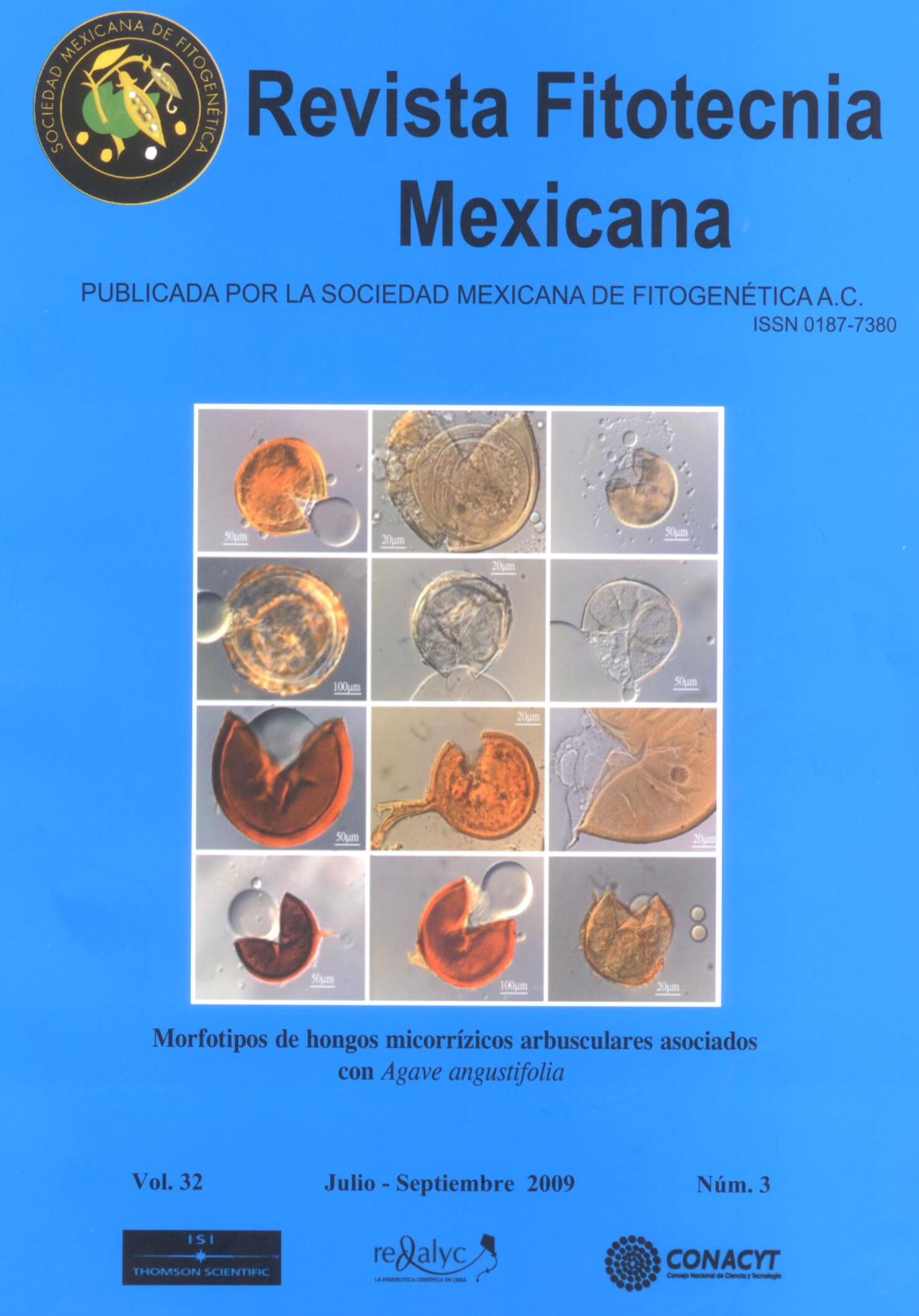SEASONAL VARIATION OF ARBUSCULAR MYCORRHIZAL FUNGI ASSOCIATED WITH Agave angustifolia Haw. AT THE SONORAN SIERRA, MÉXICO
Main Article Content
Abstract
Agave angustifolia Haw. is distributed along the western slopes of the Sierra Madre in Sonora, México, where it is used for distilling a spirit called 'Bacanora'. Rhizosphere and rootlets of this species were sampled from three wild populations during the four seasons of the year, in order to evaluate their relationship with arbuscular mycorhizal fungi (AMF). The amount of AMF spores varied from 9200 to 43 500 spores dm-3, which belong to 32 morphotypes of Acaulospora (10), Archaeospora (2), Diversispora (1), Glomus (17) and Pacispora (2). The mycorrhizal colonization ranged from 4.8 to 24.9 %, the visual density from 0.43 to 0.51 %, the intraradical mycelium from 3.8 to 8.9 mg dm-3 and the extraradical mycelium from 31.1 to 93.4 mg dm-3. The correspondence analysis showed that sodium, potassium and magnesium were the most important abiotic factors, while the relevant biotic factors were the ratios of extraradical mycelium:intraradical mycelium and extraradical mycelium:rootlets dry weight. Nonetheless, the canonical correspondence analysis showed that A. angustifolia-AMF interaction is far more complex and that it can not be explained solely by these factors.

